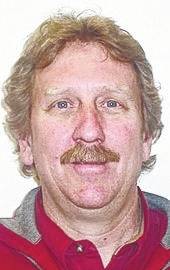
The farmers have been hitting the fields all around the county this past week. Many have been working ground, and north of Delaware they’ve been planting corn. With the rain moving in things may come to a halt for a while but the weather is looking good for next week. Overall it has been a good spring so far.
Over the past few years, with funding from Ohio Soybean Council, we’ve re-examined Ohio’s soybean planting date, row width, and seeding rate recommendations. Here are some things to keep in mind, as we approach soybean planting:
Planting Date:
The date that the soybeans go into the ground has a big effect on yield. Late planting can cause a yield reduction ranging from 0.25 to 1 bushel/acre/day depending on the width of the row, date of planting, and variety.
According to Laura Lindsey, OSU Extension Specialist, southern Ohio, soybeans should be planted any time after April 15 when soil conditions are suitable in the southern part of Ohio but in northern Ohio, soybean planting can begin the last week of April if soil conditions are suitable.
Soybeans should not be planted until soil temperature reaches 50 degrees Fahrenheit and moisture is present at planting depth. “Planting too early (when conditions are not adequate) comes with risk such as damping-off, bean leaf beetle, and late spring frosts” says Lindsey.
Width of rows:
Most soybeans are grown in narrow rows here in Delaware County and throughout the state: 7.5- or 15-inch row width. Soybeans grown in narrow rows generally produce more grain because they capture more sunlight energy, which drives photosynthesis. Row width should be narrow enough for the soybean canopy to close by flowering. With later planting dates, it is important to plant soybeans in narrow row widths to maximize yield.
Seeding Rate:
Lindsey says that the effect of plant population on yield is very small over the normal range of seeding rates and for any particular set of condition. For a crop planted before May 20 in narrow rows, final populations of 100,000 to 120,000 plants/acre are generally adequate for maximum yield.
Final population is a function of seeding rate, quality of the planting operation, and seed germination percentage and depends on such things as soil moisture conditions, seed-soil contact, disease pressure, fungicide seed treatments, etc.
In our research trials, we planted 140,000-150,000 seeds/acre in 15-inch row width and achieved final stands ranging from 109,000-147,000 plants/acre with an average of 132,000 plants/acre. “Our seeding rate research is on-going with variable seeding rate trials being conducted this year” says.
Alfalfa weevil:
While most farmers are focused on getting corn and soybeans in during the next few weeks, this is also the time to be aware of what alfalfa weevil larvae are doing for those of you with forage.
While February and March were warm, warmer weather on the horizon will give larvae a boost in their development, according to Andy Michel, OSU Extension State Specialist, entomology. Scouting is essential to maintain a healthy alfalfa stand.
Keep in mind that, while your alfalfa may be resistant to potato leaf hopper, it is not resistant to alfalfa weevil. Michel says that as a reminder, alfalfa weevil scouting is accomplished by collecting a series of three 10-stem samples randomly selected from various locations in a field. Place the stem tip down in a bucket. After 10 stems have been collected, the stems should be vigorously shaken in the bucket and the number of larvae in the bucket counted. The shaking will dislodge the late third and fourth instar larvae which cause most of the foliar injury.
Close inspection of the stem tips may be needed to detect the early 1st and 2nd instar larvae. The height of the alfalfa should also be recorded at this time. Economic threshold is based on the number of larvae per stem, the size of the larvae and the height of the alfalfa. The detection of one or more large larvae per stem on alfalfa that is 12 inches or less in height indicates a need for rescue treatment.
Michel says that when alfalfa is between 12 and 16 inches in height, the action threshold should be increased to two to four larvae per stem depending on the vigor of alfalfa growth. When alfalfa is 16 inches in height and there are more than four larvae per stem, early harvest is recommended.


